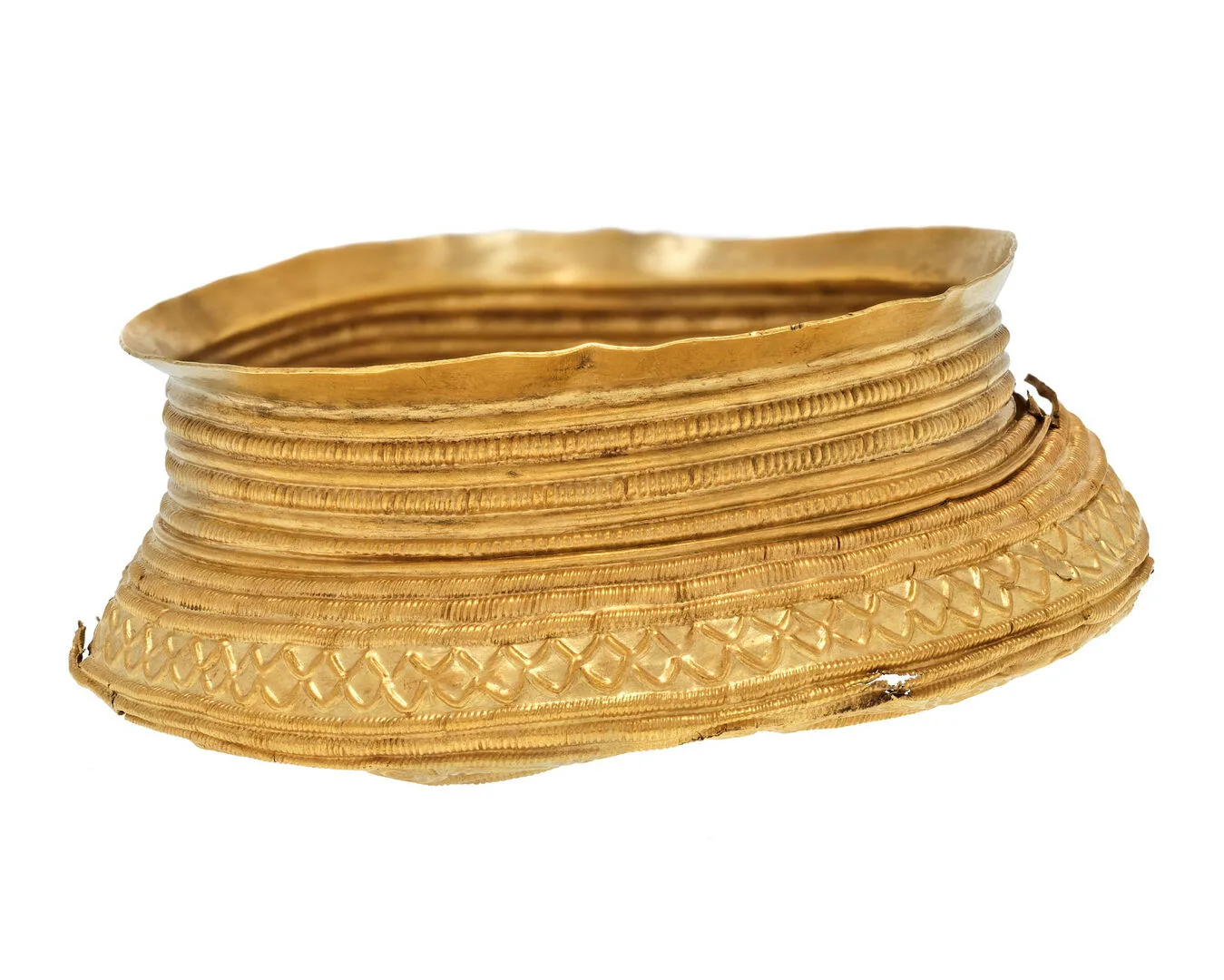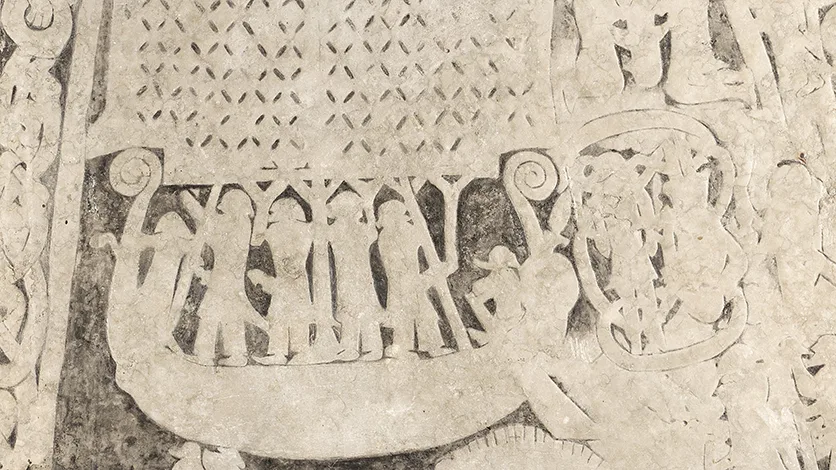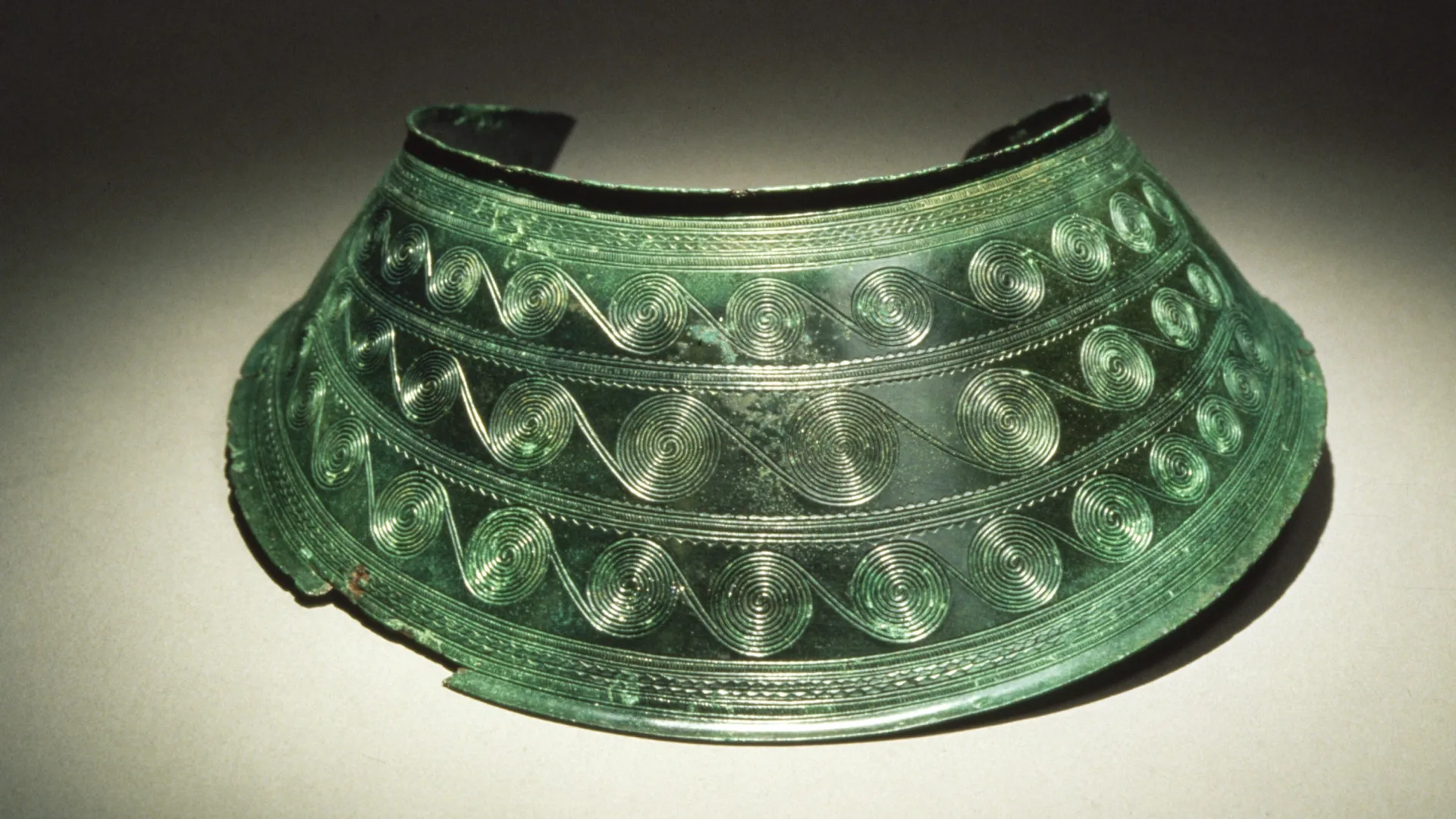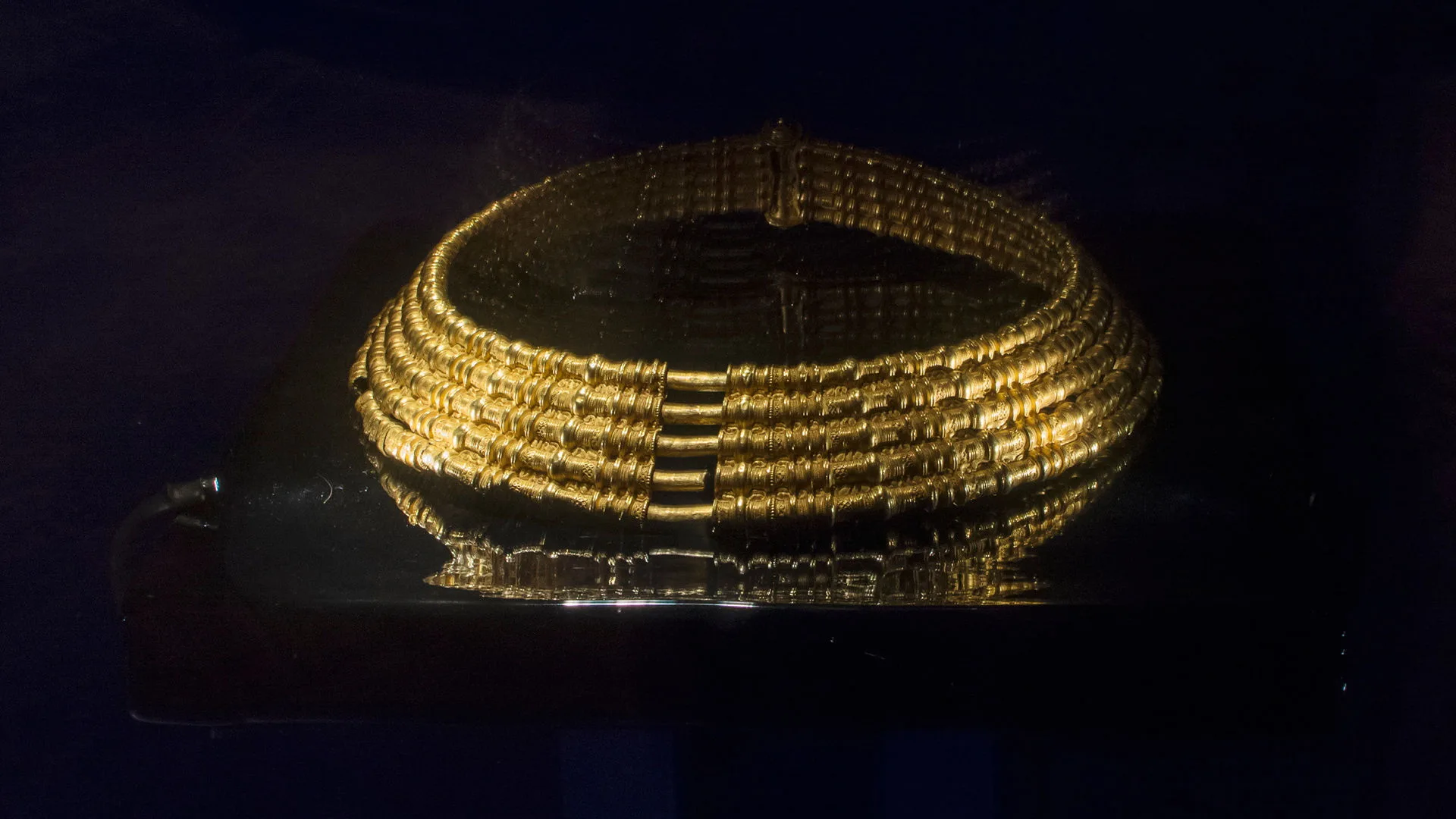Wealth and status in the Bronze Age
Stone Age
12,000 BC – 1700 BC
Bronze Age
1700 BC – 500 BC
Iron Age
500 BC – AD 1100

Two gold bowls from southern Sweden can be seen in the Gold Room at the Swedish History Museum. These bowls, made from paper-thin gold, are far too fragile to for any practical purpose. Both are richly decorated and were deposited in the ground at special locations near the sea, one in Halland and one in Blekinge. To own such bowls must have signified great status. And perhaps even greater prestige came from giving them up, offering them to the gods in ceremonial acts at sacred sites.

Gold bowl
Found in Smörkullen, Skrea parish, Halland.
On view at Historiska museet in the exhibition Guldrummet
A wealthy elite
The Bronze Age was an era of grand gifts, when valuables were placed in the earth or water. These offerings to deities or higher powers have been preserved in bogs, lakes and springs, or on hilltops, places that were likely regarded as sacred. Jewellery and weapons were submerged beneath the surface of the water, disappearing from human ownership. But the person who gave them likely gained great prestige and honour in return.
Bronze Age society was structured around a ruling class that controlled access to bronze and gold. These elites were the ones in a position to make generous offerings, both to each other and to the divine. They were also the ones buried with rich grave goods in large burial mounds, which were clearly visible in the landscape during the early Bronze Age.
We know very little about those who did not belong to this elite. They left behind few traces. Over time, Bronze Age burial customs became more egalitarian, as cremation became common and grave goods fewer. Surface markers of graves became smaller, or disappeared altogether. However, this shift does not necessarily mean that social differences diminished.
The fragile gold bowls – offerings to the gods
These gold bowls are so delicate that they could never have been used for drinking or any other practical purpose. They are paper-thin, carefully hammered out from gold sheet. To own such bowls must have been a clear sign of high status. But to offer them to the gods during ceremonial rituals at sacred places would likely have conferred even greater prestige. The bowls are richly decorated with radiating crosses and concentric circles.

Gold bowl
Found in Mjövik, Nättraby parish, Blekinge.
On view at Historiska museet in the exhibition Guldrummet
Symbolic decoration
The decoration on the bowls is symbolic. To us, it appears abstract and stylised: zigzag lines, rows of bosses, circles, and wheel crosses. These were common motifs during the Bronze Age, appearing on rock carvings, ritual objects, weapons, and jewellery alike.
On the carvings, circles and wheel crosses are often combined with ships. They may also symbolise wagons drawn by oxen or horses. In some graves, wheel crosses were engraved on loose stones.
In Halland, where one of the bowls was found, a burial urn from another grave ws placed on a flat stone carved with a wheel cross and a ship. Other examples include ritual objects such as miniature wagons with wheels, carrying large bronze discs. These discs, interpreted as solar symbols, are decorated in a similar style to the gold bowls.
The various combinations of ships, solar discs, horses, and wagons suggest that wheel crosses and circular figures symbolised both movement and the sun, and perhaps also the journey beyond death. The meanings behind these motifs were likely part of a broader belief system in Bronze Age society.





